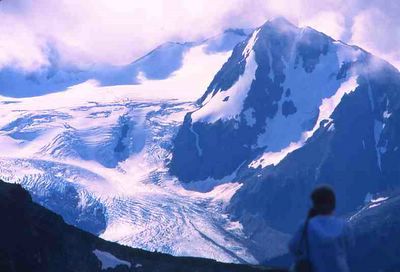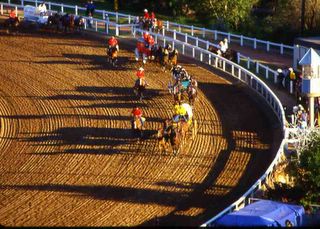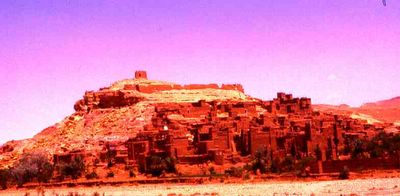
The plane flew parallel to the distant spine of the Andes, whose sharp peaks rose up out of the vast, brown, mildy rolling landscape. We landed in San Carlos de Bariloche, Argentina, Chile just 30 miles away over that spine of peaks. I was in Patagonia.
Sometimes when you travel, your experience is deepened by coming to a place that’s long tugged at you. A place that’s called you to come through messages that have stuck for years to your bones and heart and soul. Your personal places of a lifetime. For me, these places include Petra, Tibet, Istanbul, the Cinque Terre, Kathmandu, Machu Picchu, Tikal, Lake Titicaca, all now visited, savored and some little part of who I am. And others I still hope to see: Burma, Bhutan, Carcassonne, Ethiopia’s rock churches at Lalibela, Mali’s mud cathedral at Djenne, the Pyramids and Abu Simbel, Angkor, Uhuru, Milford Sound.
Patagonia is one of those places that had tugged at me and, as I stood in it for the first time, on the sidewalk outside the Bariloche air terminal, I said, to no one in particular, “We’re in Patagonia! How cool is that?!” A Finnish woman who’d been on our flight heard me and said in a serious voice, “It is about 37 degrees.”
Before we’d exited the terminal, beautiful, black-haired girls manning the doors had handed us cards warning against our trying to bring any foreign fruits, vegetables or plants into Patagonia. After they handed us the fruit-warning card, they reached into their baskets and handed each traveler a gargantuan, shiny, red apple. “Look at these apples!” I cried, fully engulfed by excitement at experiencing things Patagonian.
“The best apples in the world,” affirmed an Argentine businessman as he took his fruit card and his apple. Dana, Mike and Adam, all hungry from the flight from Buenos Aires, ate theirs on the spot and agreed. The best apples in the world.
We met our guide, Roberto, and driver, Fabio. Bariloche, which sits in the midst of Nahuel Huapi National Park, the world’s third oldest national park after Yellowstone and Banff, has about 100,000 year-round residents, but in a good year hosts one million visitors. This was a good year, and it was July, height of ski season. Besides Argentine and Chilean visitors, Brazilians en masse were in Bariloche to ski, see, and be seen. They’d schuss around Cerro Catedral ski area during the day and fill Bariloche’s quaint streets, restaurants and chocolate shops in the evening. Said Roberto, “If any of you know some Spanish, you walk down the street and you won’t understand a word. Everybody’s speaking Portuguese.”
On the way to town, we passed through the police checkpoint that monitors comings and goings in Rio Negro, the province Bariloche sits in. Roberto held his breath, then released it as we were waved through. “Sometimes they stop the bus and check everyone and give out fines. When the police need money.” He told us about obscure, outdated motoring laws kept on the books specifically to provide as-needed revenue: “They can always put you some fines if they need money,” said Roberto. “There’s an old law requiring motorists to carry a kerosene lamp, wax, and wooden matches. Chances are you’ll be missing one, two or three of these, so you can get a fine put to you.”
In two days, we’d be embarking on one of the planet’s great border crossings, the Cruce de Lagos, which brings travelers by boat and bus across Argentina’s Patagonian lakes and forests and into Chile’s. (I’ll share the wonder of that day in a separate post.)
So, we had two days to explore Bariloche, which sits on mountain-ringed Lake Nuahel Haupi ( above). We ate cheap, bountiful food, including exquisite fresh-caught lake trout, at La Esquina Restaurant. We walked the streets lined with brightly painted, Swiss-style wooden buildings. Bariloche’s residents are mainly of Swiss descent, with some German and Italian tossed in. In the late 1800s, the government offered free land to European settlers. Bloody battles with the indigenous indians ensued and, as in most places, the native people were eventually wiped out or moved, and Bariloche and its Patagonian environs were turned over to sheep ranching and the wool industry. All that vast, uninhabited, brown land I’d seen from the plane, in the shadow of the Andes? Unimaginably massive sheep ranches. It takes a lot of land to feed one sheep. If your herd is huge, you need a fair chunk of Patagonia.
On Bariloche’s lakefront sits the town’s main square, anchored by brown-timbered stone buildings in alpine motif. The word “Justicia” was spraypainted on the cobbles, as were scores of white kerchiefs. Each kerchief represents a mother or grandmother, an abuela, searching for information about Argentina’s “disappeareds,” mostly young people imprisoned or killed in the late 70s and early 80s by the generals of Argentina’s then ruling military junta. The square was a smaller and in some ways more poignant version of Buenos Aires’s Plaza de Mayo, also a locus of quiet protests honoring the memory of the desaparacidos. Many of Argentina’s white-kerchief abuelas are the mothers of women imprisoned during the country’s “dirty war,” women who gave birth in prison and whose babies were taken away and not seen again by their families. The abuelas may, by now, know their children’s fates, but they want to know what happened to their grandchildren.
Travel, like life, is often a series of contrasts and juxtapositions. After we prayed in our way on the kerchief-covered cobbles, we went back to our lakeview hotel, and Adam and Dana played a game of two-on-two pool basketball, shooting into a floating, jury-rigged laundry basket, with a brother and sister from Minas Gerais in Brazil. They laughed and whooped and splashed, communicating in the language of sport and fun. Just four kids on vacation.
www.LoriHein.com






